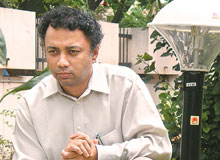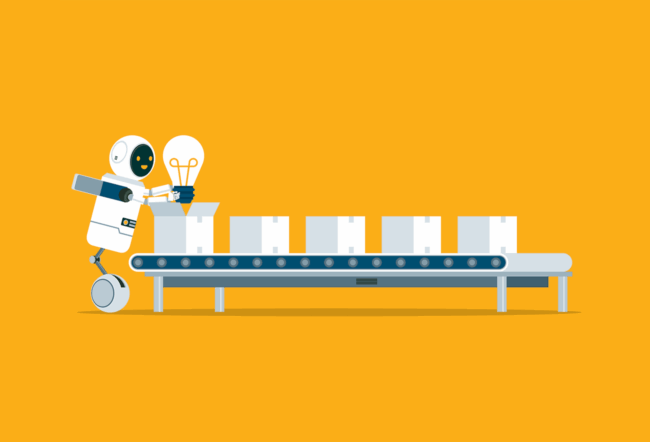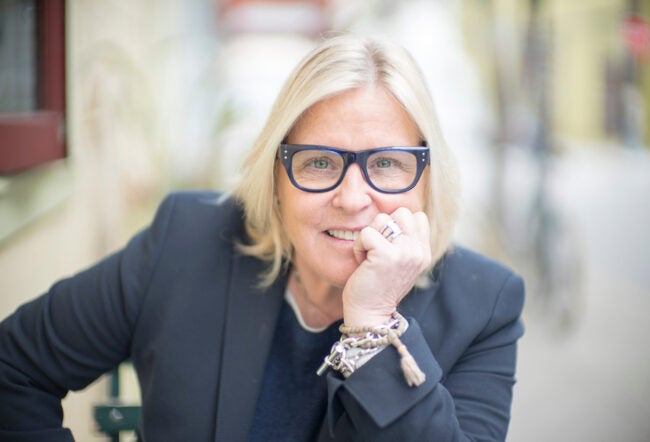The best lesson in rural business that Harish Hande, co-founder and managing director of Solar Electric Light Company (SELCO) India, ever learned was from a street vendor in Bangalore, who said: “Rs. 300 a month is expensive, but Rs. 10 a day is fine.” Typical of the country’s poor, the street vendor was spending Rs. 15 a day — about 10% to 15% of her income — to get light from a kerosene lamp that allowed her to sell her vegetables after dark. “The rich don’t spend that much for one light,” says Hande, whose company has provided sustainable energy products to underserved households and businesses in the state of Karnataka since 1995.
The street vendor’s comment helped Hande understand that rather than reducing the cost and quality of SELCO’s solar products to reflect the low incomes of rural and urban poor, he needed to offer creative ways for poor customers to finance purchases while keeping quality standards high. With a solar-powered light — purchased with, say, a loan at an interest rate of 14% — the vendor would be spending nearly half of what she was on her kerosene lamp. “Affordable doesn’t mean low cost, but appropriate financing,” he says. “It is coming up with need-based technologies, rather than fitting the problem to the solution.”
‘Far Removed from Reality’
According to Hande, fitting the problem to the solution is a mistake that companies often make. When fast-moving consumer goods companies began selling small, Rs. 1 packets of shampoo to poor consumers, for instance, the product was hailed in many circles as a great business innovation. But Hande points out that it’s a perfect example of fitting a problem to a solution, rather than the other way around. The poor need cooking stoves more than shampoo, he says — yet no firm has designed a stove that lasts more than six months.
“‘The fortune at the bottom of the pyramid’ is an extremely vulgar [phrase] that is going around,” says Hande. “[Companies] always think of selling to the poor.” Instead, they should focus on creating “reverse supply chains” in which the rich buy from the poor, he notes. “Until that happens, it is an unsustainable situation.”
At the World Economic Forum in Davos earlier this year, Hande moderated a discussion between nearly 30 CEOs. “It was the scariest two hours of my life,” he recalls. The room was full of “extremely smart people, but so removed from reality.” When they began talking about how they could help develop a remote village, “two CEOs of global audit firms said, ‘We are going to create an e-kiosk.’ Where’s the electricity, boss?” Hande asks rhetorically. “Others suggested computers [despite the village being without] power or water. Finally, they all agreed that they are very removed from the problem. They couldn’t come up with a solution.”
At SELCO, Hande is in the thick of things when it comes to finding solutions that the country’s poor use and need. That explains why the company has been the recipient of numerous awards in recent years, from the Tech Museum in Silicon Valley to the Ashden Awards for Sustainable Energy in the U.K. (The latter are often referred to as the “green Oscars.”) Hande himself has also been showered with accolades, including being named 2007 Social Entrepreneur of the Year by the Schwab Foundation for Social Entrepreneurship and The Nand & Jeet Khemka Foundation,and hailed by the likes of Financial Times, India Today and Business Today as a sustainable-energy mover and shaker.
New Energy
Born in 1967, Hande grew up in the steel town of Rourkela in Orissa. Speaking fluent Oriya, Bangla, Kannada, Hindi and English, he received a bachelor’s degree in energy engineering from the Indian Institute of Technology in Kharagpur, before heading to the University of Massachusetts for his master’s degree in energy engineering and a doctorate in rural electrification. Pivotal in helping him take the early steps toward setting up SELCO was José Martin, a professor at the university who became his adviser and mentor, teaching him to value socio-economic needs just as much as technology. “Until then, I was just a geek with equations in my blood,” Hande recalls.
A tall, slim man with a curly mop of hair, Hande married a University of Massachusetts classmate, Rupal Trivedi, who lives in the United States with the couple’s seven-year-old daughter. “We have a cross-continental marriage,” Hande says.
Most people describe Hande as unassuming and humble, but there is intensity about him, which he says he gets from the poor. “A thelawala [street vendor] doesn’t say at 11 p.m. that he is tired. The poor scrape and save; they do what they have to do to survive. They never give up. They don’t have a choice, or that luxury.”
Hande didn’t just pick up these lessons in India. In the journey from geek to social entrepreneur, he recalls a brief, eye-opening, visit he made to the Dominican Republic. He was appalled by the poverty in the country, which seemed to go hand in hand with the lack of electricity. However, he was pleasantly surprised to find poor people paying for solar electricity, which showed him that it can be a viable energy proposition. With what remained of his scholarship money and a solar-powered laptop, he later spent six months with sugarcane farmers in Anuradhapura, Sri Lanka. Buddhist monks, who spoke only Sinhalese, came to hear how this Indian traveler wanted to install solar powered panels.
Through such interactions, Hande began formulating what at times might appear to be contrarian views about environmentalism and sustainability in the Third World, where the rich are “banking on the patience of the poor.” He points out, for example, that a relatively wealthy Indian earning Rs. 30,000 a year emits 4.95 tons of carbon dioxide annually, which is only slightly less than the average Westerner, who emits 5.05 tons of carbon dioxide every year. But India’s overall average carbon dioxide emission is 1.67 tons, he says, because its poor only emit 1.11 tons. It’s a similar situation in China. “In a sense, the rich in India and China are hiding behind the poor and pointing fingers at the West when, in fact, we can leapfrog the West’s mistakes with sustainable technology.”
Thanks to the time he has spent in villages in India, Africa, South America and Sri Lanka, Hande is attuned to not just the plight of the poor, but also the rural “ecosystem.” In Sri Lanka, Hande met SELCO’s co-founder, Neville Williams, a former Green Peace activist who commissioned him to set up a 100-home solar project in India. SELCO was founded in 1995 with Rs. 15,000 in Bangalore, Karnataka. Hande says he debated whether SELCO should be based in his home state of Orissa, but decided his network of relatives in Bangalore — and their sofas that could serve as makeshift beds — would come in handy until he could get the business up and running. An added benefit, although Hande didn’t know it at the time, was that Karnataka had a better network of rural financing than Orissa.
Deciding to start a solar company was one thing; making it successful was another. He first bought and sold one solar light, then another and another. “The idea was to figure out if people were receptive to solar power,” he says. At first, they weren’t. One of Hande’s early customers was a wealthy, but skeptical, areca-nut farmer. The farmer’s mother, however, cornered Hande after she overhead his conversation with her son. She gave Hande Rs. 15,000 and told him to install the solar panels and lights on the sly. Four hours later, the job was done. That night, when there was a power outage, the farmer saw his field lit up, and his reticence to embrace solar lighting turned into enthusiasm. “The old lady established the business model for us,” says Hande. He wrote to Williams, asking him to underwrite 25 more solar lights, and they subsequently received funding from nonprofits such as E+Co of the U.S. and then The Lemelson Foundation and The Good Energies Foundation, which collectively provided US$1.4 million of funding in 2008. (SELCO bought out Williams last year.)
Hands On
While Hande installed the first 500 light sets and travelled from village to village to drum up interest in his products, he needed to find technicians to develop SELCO. His first ports of call were the bicycle and TV repair shops that no Indian village is without. There, he met young school dropouts, recruiting some and asking others for sales leads.
But is solar-driven electricity a luxury villagers could only dream of affording? Not according to Hande. As SELCO’s website states, the company wants to dispel three myths: that the poor cannot afford sustainable technologies; that they cannot maintain sustainable technologies; and that social ventures cannot be commercial entities.
SELCO is a for-profit enterprise, with management owning a 1.5% stake. It has installed solar lights in a total 115,000 households since it began, generating sales of Rs. 12 crore in the fiscal year ended March 31, 2009, with a target of increasing revenue to nearly Rs. 40 crore by 2014. “I am a big fan of the for-profit structure,” Hande says. “You know your losses, reduce your losses and examine your finances year on year.” Out of the five-person team in Bangalore, he says, two are “tree-huggers” and three are not. “SELCO’s CFO, K. Revathi, for instance, is a hard-core commercial person,” he says. Each of the company’s 25 satellite offices has to break even and “she always pushes them to make their numbers. But they cannot just make [the numbers] through one hospital installation or school. Even if they do that, we insist that they do 20 houses alongside it.”
Helping to make those numbers sustainable is the local service SELCO provides. “Everyone says solar is maintenance free. It is not. Anything made by humans is going to fail,” he says. “The solar panels may not fail, but a rat can get in and eat the wires, or the water in the battery may dry out.” This is where the satellite offices in rural Karnataka come in. Each center is run by staff that is never further than two hours away from their customers. Apart from Hande, none of the 170 employees are engineers. Most are fourth- and fifth-grade dropouts who speak Kannada, a local version of the state language, “to create trust” among the villagers. These centers are responsible for selling, customizing and installing units. While the packages sold will vary from house to house, a typical four-light, 40-watt panel with a 12-voltage battery costs around Rs. 15,000, or US$350.
Tailor Made
The catchword at SELCO is customization, says Hande. “Wants can be standardized; needs have to be customized.” In practice, that means SELCO’s products can be adapted to address what a customer needs from their lighting. That philosophy became clear when a farmer was thinking about ordering a four-light unit, until he found out the price. “One of my technicians, who is brilliant, sat down with the farmer and said, ‘I will give you four electrical points but two lights and you can move the lights from room to room as needed,'” says Hande. “Within six months, about 20 other houses ordered the same model.”
Now, every time a technician meets prospective customers, he will ask about their house and where the lights would be used. One daily-wage-earning widow wanted solar lights because she was staying up late with her daughters — despite having to rise early each morning — out of worry that they would burn themselves with the kerosene lights they lit to study in the evenings. A farmer, meanwhile, wanted a solar light at his front door to keep his family safe from intruders. Whenever there was a knock on the door at night, he had to crank up his kerosene lamp for a few minutes to create enough light to see who was at the door.
SELCO designed solar headlamps for rose pickers, who used to get up at midnight to work so that their flowers would be in the markets before they wilted in the daytime heat. The headlamps freed up the pickers’ hands and increased productivity. Then there were the silk farmers, who used kerosene lamps to check on their worms at night despite the danger that a single drop of kerosene would kill the worms. SELCO installed a solar light bright enough for the farmers to see, but not so intense that it would disturb the worms.
But Hande doesn’t want SELCO’s work to stop once a product is sold. He cites the case of a basket weaver, whose solar lights helped to increase her output. “That is an increase in productivity, not income,” notes Hande. “She has no market for those extra baskets. There is no market linkage.”
Market linkage is a phrase Hande uses often to describe how he wants SELCO to address the entire supply chain surrounding a product. He once came across day laborers whose only sources of light at night were candles. When they got home from work, the laborers rolled bidis (local cigarettes) for extra money. They told Hande that if they had more light to see, they could weave two or three baskets a night and sell them for Rs. 30 each. When Hande asked if they would be willing to spend Rs. 5 a basket to pay for a solar light, the weavers said yes. So SELCO put them in touch with a middleman who could sell their baskets. The weavers used proceeds from their sales to pay off the loan they took out to buy SELCO’s solar panels in four years. “The moral of the story is if you can create a product that matches [people’s] needs, it does not matter how poor [they] are,” there will be a market for it, says Hande.
Not everyone sees eye to eye with Hande. “The World Bank has always said that solar [lighting] does not make sense for the poorest of the poor. But here you can see if the need is matched, it is a productive fit,” he says. “We have not done anything extraordinary; we have just been a catalyst between two resources. The idea came from them, and we had tools to link them to the market…. There is enormous potential if you just look at the whole chain, find the weakest link and strengthen it.”
More often than not, the weak link is financial in nature. Organizing the loans villagers needed to buy solar products was SELCO’s biggest challenge in the early years. “How do you create doorstep financing?” Hande asks. “We were very clear that we wouldn’t finance our products because it creates a conflict of interest. We had to piggyback on a fantastic financial network in rural India. It took us three years.”
When Hande first got in touch with banks, however, they told him they could only finance income-generating activities, such as fuel and agriculture, within specific timeframes. For example, banks would lend to sugarcane farmers three times a year, peanut farmers four times a year and paddy farmers once a year. Solar funding didn’t fit that model, they insisted. But a loan officer at Malaprabha Grameen Bank finally “got sick of us and said, ‘Get out of here. I’ll finance 100 solar power sets.’ We asked him for a letter indicating this and took it to the other banks and said, ‘They are doing it. Why aren’t you?”
But the hard part was yet to come, he recalls. The deeper SELCO got into the rural economy, the more obvious it became to Hande that flexible and site-specific financing was needed. Daily wage earners, for instance, could return Rs. 10 a day but not Rs. 30 every three days. But banks didn’t have the infrastructure to collect money on a daily basis. “Microfinance institutions do that, but their 31% interest rates [make them as expensive as] professional money lenders,” he says.
Today, Hande lobbies institutions like the Reserve Bank of India (RBI) and the National Bank for Agriculture and Rural Development, so that they in turn can help change the way banks administer rural financing. For instance, the RBI requires a down payment of 15% to disburse a loan, but this amount is too high for many of SELCO’s customers. That’s when organizations such as the Global Village Energy Partnership, United Nations Environment Program, and Renewable Energy and Energy Efficiency Partnership step in and provide the down payments. As arduous as the process can be, SELCO gains the trust of existing customers while making new sales when it helps them procure financing, Hande notes.
Emotional Economics
SELCO has been known to go to great lengths to close a sale. A customer once called SELCO to say his daughter had refused to get married because her new home had no electricity. The farmer paid SELCO to install solar lights in the home without the future in-laws knowing about his largesse. SELCO concocted a story and installed the lights, and the daughter agreed to the marriage. “No amount of Excel spreadsheets could have come up with such emotional economics,” says Hande with a smile.
The company’s flexibility and customer service have also spawned other entrepreneurs. An auto rickshaw driver had SELCO install solar panels on the roof of his house in the outskirts of Bangalore. He charges 30 small batteries during the day and lends them to street vendors for Rs. 15 per battery per night. The battery rental has increased his monthly income from Rs. 4,500 to Rs. 13,000.
But there have been speed bumps along the way. In 2005, a new national solar subsidy program in Germany was a big market opportunity for Indian solar module makers, which turned their focus away from supplying local companies. SELCO’s prices rose 46% and the panels that had previously taken 15 to 20 days to be delivered were taking three to six months. It was a “double whammy” that hit the company’s top line, says Hande. But the company is now “back in the black,” he says. “We increased the plethora of suppliers and varied the type of products we offer.”
But even now that revenue is back in growth mode, Hande is cautious. “My fear is that if we grow like how the others want us to grow, we will lose sight of our mission,” he says. “If SELCO scales [in the way that is] traditionally taught in business schools, it will kill itself.” He maintains that SELCO’s focus on customization cannot be scaled because the problems of a village in, say, Uttar Pradesh, will different from those in Karnataka. “The [question] is, how do you leverage your 15 years of experience to go deeper [into Karnataka] and yet expand geographically … replicating SELCO’s model with local customization.”
Until a few months ago, Hande spent much of his time focused on day-to-day operations, including visiting villages, talking to customers and checking the products. Now, CEO Thomas Pullenkav, a graduate of the Institute of Rural Management who joined SELCO a year after it was founded, and CFO K. Revathi,who has been with the firm since 2004, have “pretty much taken over running the company.” Hande is now spending his time developing an “incubation lab” and being a spokesperson for sustainable energy. As he said in a TV interview at this year’s World Economic Forum, part of the reason he came to Switzerland was to meet India’s policy makers. “It is easier to meet them in Davos than Delhi,” he said with a grin.
What continues to be his driving force? “I don’t see a choice,” he says. “We talk about India’s 8% growth, but that is absolute bull. The divide is increasing. If you look at poverty reduction, that’s not happening. Sustainable energy can bridge that divide. How, with a good conscience, could I be working anywhere else?”



